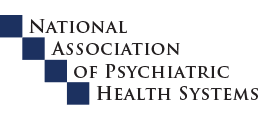Sierra Tucson offers effective, comprehensive treatment for individuals struggling with addiction and mental health concerns. Learn more about the signs and symptoms of prescription painkiller addiction.
Understanding Prescription Painkiller Addiction
Learn about prescription painkiller addiction
Prescription painkillers have improved upon the quality of life of those who were once struggling with acute or chronic pain. However, these medications do not come without risk. Regardless of if they are consumed as prescribed by certified healthcare professionals, abused illicitly for self-medication, or abused recreationally, prescription painkillers can present the risk of addiction. A handful of the most commonly prescribed prescription painkillers, such as Vicodin, OxyContin, Percocet, and Demerol, all contain opioids, which are a highly addictive category of substances that also include heroin and morphine.
This does not mean that consuming a prescription painkiller is in the same vein as consuming heroin. These medications can be extremely beneficial, and the risks are less severe when they are taken as prescribed. However, the danger of developing an opioid use disorder is real, and the risk is heightened drastically when these substances are consumed without the appropriate medical supervision.
Hydrocodone (Vicodin), Oxycodone (the active ingredient in OxyContin and Percocet), and meperidine (Demerol) are synthetic or semisynthetic opioids, meaning they are manufactured in a laboratory, however, share similar structures with naturally occurring extracts from the opium poppy plant. They also possess similar properties, such as triggering euphoria, relieving pain, and presenting the risk that individuals will develop opioid use disorder. As time moves along, those who consume prescription painkillers that contain opioids may become tolerant. Tolerance is a sign of dependence, as is the presence of upsetting symptoms of withdrawal when an individual attempts to end use of the drug or dramatically decrease the amount they are taking.
The desire to want to experience joyful effects of an opioid-based painkiller while avoiding the pain of withdrawal can keep an individual stuck within what might feel like a continual, non-stop opioid use disorder. It can be very challenging for someone with this condition to end their dependence on opioids without effective treatment. When comprehensive care is provided, though, an individual can rid their body of opioids in a secure and comfortable manner, and can then finish the therapeutic programming that will let them avoid relapse and live a healthier, happier, life that is free from the drive to want to abuse prescription painkillers.
Statistics
Prescription painkiller addiction statistics
According to the National Institute on Drug Abuse (NIDA), more than 52 million Americans have used prescription drugs for non-medicinal purposes at least once in their lives, and six million have done so within the last 30 days. The U.S. Centers for Disease Control and Prevention (CDC) states that opioid-based prescription medications account for 44 overdose deaths a day in America, an average that breaks down to 26 men and 18 women. In 2013, more than 16,000 people lost their lives because of prescription opioid overdose. Before that, in 2011, prescription painkillers were the cause of 420,000 visits to emergency rooms.
Causes and Risk Factors
Causes and risk factors for prescription painkiller addiction
The abuse of prescription painkillers and the development of opioid use disorder might be affected by a series of factors, including:
Genetic: Detailed research supports the presence of a genetic impact on the development of chemical dependence. For example, one’s genetic disposition to impulsivity and novelty seeking can put them at increased risk for abusing painkillers and other substances. Also, studies involving twins and adopted children report that having a biological parent with a substance use disorder increases the chances that an individual will share similar problems.
Environmental: Someone who suffered child abuse or other types of childhood trauma will be at increased risk for participating in substance abuse, as will an individual who suffers from high levels of stress that supersede their coping skills. Specific to prescription drug abuse, suffering from an accident or injury where treatment includes prescription painkillers can be an environmental risk factor for developing an opioid use disorder.
Risk Factors:
- Ease of access to prescription pain medications
- Experiencing severe acute or chronic pain
- Family history of substance use disorders
- Trauma
- Poor coping skills
- Stress
- Prior substance abuse
Signs and Symptoms
Signs and symptoms of prescription painkiller addiction
Below are some of the most typical signs and symptoms that might display that an individual is abusing opioid-based painkillers:
Behavioral symptoms:
- Diminished participation in significant activities
- Deception regarding whereabouts and/or activities
- Slurring speech
- Visiting multiple doctors to get prescriptions for painkillers
- Borrowing or stealing medication that has been prescribed to someone else
- Social withdrawal and isolation
Physical symptoms:
- Impaired coordination
- Itchiness
- Pupil dilation
- Heavy perspiration
- Decreased blood pressure
- Constipation
- Disrupted sleep patterns
Cognitive symptoms:
- Confusion
- Disorientation
- Poor decision-making skills
Psychosocial symptoms:
- Irritability
- Depression
- Drastic changes in mood
Effects
Effects of prescription painkiller addiction
Opioid use disorder that includes prescription painkillers can have a significant impact on one’s individual’s physical, social, and psychological wellbeing, and can lead to the following negative results:
- Isolation
- Development of physical health problems
- Impaired or destroyed interpersonal relationships
- Family discord, including separation and divorce
- Job loss and chronic unemployment
- Financial distress
- Homelessness
- Suicidal ideation
- Suicide attempt or attempts
- Legal problems, including arrest and incarceration
Co-Occurring Disorders
Prescription painkiller addiction and co-occurring disorders
An individual who has become dependent on prescription painkillers might also be grappling with a co-occurring mental health problem. The following disorders are typically diagnosed in those who have also developed opioid use disorder:
- Major depressive disorder
- Other substance use disorders
- Posttraumatic stress disorder (PTSD)
Effects of Withdrawal and Overdose
Effects of prescription painkiller withdrawal: Ending or significantly decreasing one’s use of prescription painkillers after developing a dependency on them can cause many upsetting withdrawal symptoms, including:
- Fever
- Loss of appetite
- Nausea, vomiting, and diarrhea
- Inability to sleep
- Pain in bones and muscles
- Powerful cravings for opioids
- Irritability and agitation
- Heavy perspiration
- Tremors and twitches
- Dysphoria
- Watery eyes and runny nose
Effects of prescription painkiller overdose: Opioids work with parts of the brain that also impact involuntary processes such as heart rate and respiration. Therefore, overdosing can put an individual in extreme danger. Anyone who shows the following signs and symptoms after consuming a prescription painkiller might require medical help:
- Breathing problems
- Pinpoint pupils
- Seizure
- Loss of consciousness
- Slow or otherwise irregular pulse
- Extreme disorientation













